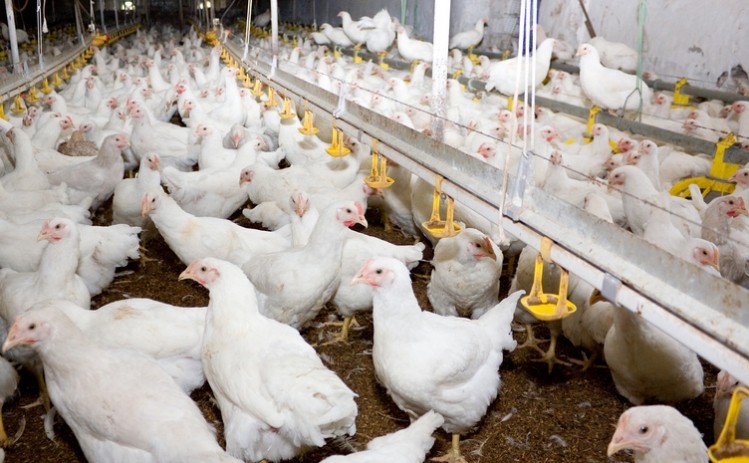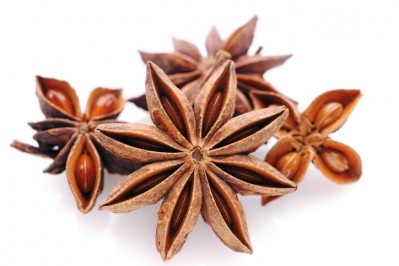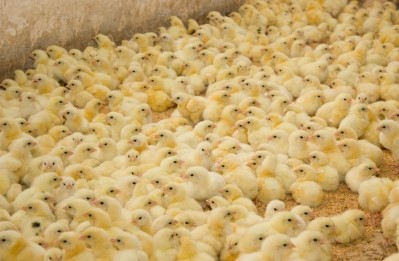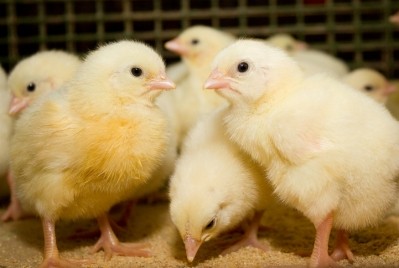Oil blend improves broiler outcome facing coccidiosis challenge

Researchers from multiple universities in Brazil explored the use of a blend of cashew nut shell oil and castor oil on broiler chicken performance and microbiota with, or without, a coccidiosis challenge. The study was published in the journal Poultry Science.
“The aim of the present study was to evaluate the effect of cashew shell liquid and castor oil blend on the performance and microbiota of broilers challenged with coccidiosis, compared with the ionophore monensin,” the researchers said.
They found that birds had similar performance regardless of diet before the disease challenge. Seven days post-challenge, birds receiving feed supplemented with monensin outperformed challenged birds on the non-supplemented diet and those facing the disease challenge and receiving the supplemental oil blend.
However, by day 14 post-challenge, birds receiving both the disease challenge and feed supplemented with cashew nut shell oil (CNSL) and castor oil had higher weight gain and improved feed conversion, they reported.
At the end of the 42-day trial, challenged birds receiving feed supplemented with monensin or the blended oils had the same live weight, weight gain and feed intake, they said. Both groups outperformed birds receiving the disease challenge and non-supplemented feed.
The numbers of Lactobacillus spp. and Clostridium perfringens rose in all disease-challenged birds, but those on the oil-supplemented diet saw a reduction in “Clostridium cluster XIV, C. perfringens, and S. aureus” and an increase in Lactobacillus ssp. copies, they said.
“Monensin and CNSL-Castor oil effectively minimized the impact of coccidiosis at different times,” the team noted. “While monensin acts as an antimicrobial, CNSL-Castor oil modulates the intestinal microbiota with antimicrobial action against gram-positive bacteria, mainly C. perfringens and S. aureus.”
Microbiota development
There is interest in the development of feed additives that can boost performance, modulate intestinal microbiota and control pathogens.
The microbiota develops with its host animal as a “mutualistic partner” and it contains a diversity of species, wrote the authors of the study. However, dysbiosis can alter the morphology of the intestinal wall and curb diversity by allowing an increased presence of pathogenic bacteria, they commented.
Upset of the balance can provoke an immune response, which redirects energy and nutrients from growth to the inflammatory response and limits performance, they said.
“Factors such as age, diet, feed additives, and presence of pathogens alter the intestinal microbiota. Coccidiosis challenge can markedly change the bacterial community in the gut, reducing microbial diversity and creating a favorable environment for the dissemination of pathogens, such as the gram-positive bacteria Clostridium perfringens.”
Phytogenic ingredients have been one area of interest for addressing microbiota support and regulation, the researchers said. Following a disease challenge, the feed supplements have been linked to improved microbial profiles in the ileum and cecum.
Why add castor, CSNL oils to poultry feed?
Phytogenic feed additives include a category for functional oils – or oils that have “an action beyond nutrition,” the researchers said.
Castor oil is considered a functional oil with antimicrobial action, they said. Cashew nut liquid includes cardanol, cardol and anacardic acid.
Previous research has found that both oils can function as ionophores and improve weight gain, feed conversion and energy availability, they said. “This increased energy availability may be associated with the antimicrobial effects of the functional oils; however, no studies have demonstrated its antimicrobial action in vivo,” they added.
Currently, anticoccidial drugs are fed preventively and continuously to reduce problems with coccidiosis, they said. The ionophore monensin is commonly used in poultry production – but strains of the disease resistant to ionophores have been identified.
“The constant discussion about reducing the use of antibiotics as growth promoters has stimulated the search for alternative methods that can reduce the impact of this parasite and act as growth promoters at the same time,” the researchers said.
Feeding trial details
During the feeding trial, 864 chicks received one of three diets for a 42-day period, the researchers said. On day 14 a selection of birds on all three diets was challenged with coccidiosis.
The diets included corn, soybean meal, vegetal oil and minerals along with either 100ppm sodium monensin or 0.15% CNSL-castor oil blend – a third, control diet, did not have supplementation, they said. Both additives were introduced into the feeds using an inert – kaolin.
Birds were weighed weekly and feed intake was measured, they said. Following the disease challenge on day 14, a selection of birds was collected on days 21 and 28 to check for lesion score and assess intestinal contents for bacterial species.
Results
Birds on all diets had similar growth performance before the disease challenge and non-challenged birds continued that trend through the end of the feeding trial, the researchers said.
Following the disease challenge, bird performance showed decreasing body weight gain and worse feed conversion ratio (FCR) from days 14 to 21, they said. However, the negative effects were less pronounced from day 21 to 28.
Compared to non-challenged birds, birds facing the coccidiosis challenge had a 17% drop in live weight by day 42 of the trial, they said.
Directly following the challenge, birds on the monensin-supplemented diet had improved weight gain, feed intake and feed conversion and a lower E. acervuline lesion score compared to other challenged birds, they said. Two weeks following the challenge birds getting the oil blend had greater weight gain, feed conversion and a lower E. tenella lesion score compared to those on the other diets.
“In the whole period (1 to 42 D of age), the live weight of birds in the positive control group was lower than that of birds in the other groups, which showed no differences between them, demonstrating that monensin and CNSL-Castor oil compensated for the negative effect of coccidiosis,” the researchers said.
“The functional oil blend improved the performance of coccidiosis-challenged broilers in the second week, resulting in similar performance to those receiving the ionophore monensin,” they stated. “The blend showed to be a good option under a coccidiosis challenge, acting as a modulator of the intestinal microbiota, with antimicrobial action against gram-positive bacteria, mainly C. perfringens and S. aureus.”
The total amount of certain types of bacteria changed in the challenged birds depending on diet, they said. In the non-challenged birds, monensin and the blended oils lowered the number of C. perfringens and E. coli.
“Regardless of the challenge, birds in the positive control group presented more Bifidobacterium spp. copies than birds in the CNSL-Castor oil group, with the monensin group presenting intermediate values,” they added.
“In the challenged birds, monensin reduced the bacterial domain and E. coli compared with the other groups. CNSL-Castor oil reduced the copy number of Clostridium cluster XIV, C. perfringens, and S. aureus, with no difference found between monensin and the positive control.”
Source: Poultry Science
Title: Comparison between a commercial blend of functional oils and monensin on the performance and microbiota of coccidiosis-challenged broilers
Authors: P.O. Moraes, K.M. Cardinal, F.L. Gouvêa, B. Schroeder, M.S. Ceron, R. Lunedo, A.P.G. Frazzon, J. Frazzon, A.M.L. Ribeiro
DOI: doi.org/10.3382/ps/pez345















